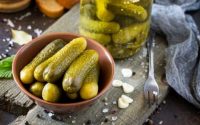This 3-Second Trick Will Tell You If Your Olive Oil Is The Real Deal
It’s a staple in many kitchens but do you really know what’s in your olive oil?
In fact, 69 percent of the extra-virgin olive oil available at the supermarket is not actually extra virgin.
So how can you tell? Luckily, there is a simple test you can do at home to determine if what you are buying is actually olive oil.
Speaking to Mind Body Green, oil sommelier Katerina Mountanos shares her method for testing if olive oil it really extra virgin.
“Pour a shot of your olive oil into a small, preferably round glass,” Katerina says. Next, “Cup the glass with one hand and cover the top with the other. We cover the top to trap the scent inside. Twist the glass in your hand to attempt to warm the oil with your body heat and move it around in a circular motion.”
Now, it’s time to put your sense of smell to the test.
“If it smells fresh like grass, fruit, or vegetables, it’s more likely that your oil is truly extra virgin,” says Katerina.
Other scents could include: “Grass, green or red tomato, banana, arugula, spinach, apple, citrus, or almond.”
If you can’t smell any of these, it’s most likely not extra virgin olive oil.
Another way to test the oil is to taste it.
Katerina says to place some of the oil in your mouth but don’t swallow it yet. Let some air into your mouth and churn it around.
“A true extra virgin will reveal lots of fruit and vegetable flavours as you swirl it around your mouth and will have a peppery or bitter taste at the back of your throat when you swallow it.”
Coughing when swallowing is also a sign of the oil’s authenticity.
“To identify a particularly good olive oil, connoisseurs take a slurp and wait for a curious burning sensation in the throat,” reports Science News.
“Sensor molecules found mainly in the human throat — but not the mouth — latch on to a chemical found in superior olive oils. The results provide a scientific basis for the age-old custom of rating superlative extra-virgin olive oils on a scale of one, two or three coughs.”
This article originally appeared on Better Homes and Gardens
Source: Read Full Article


